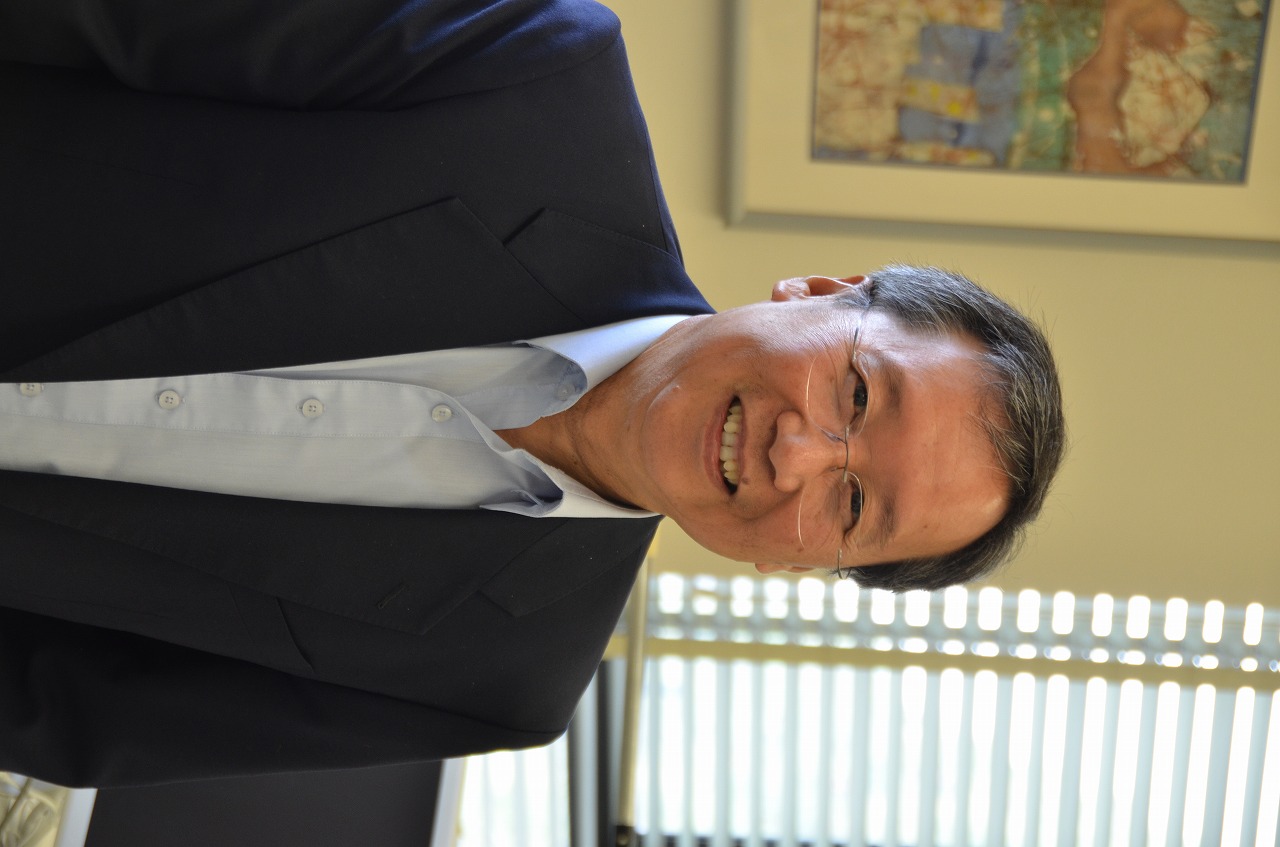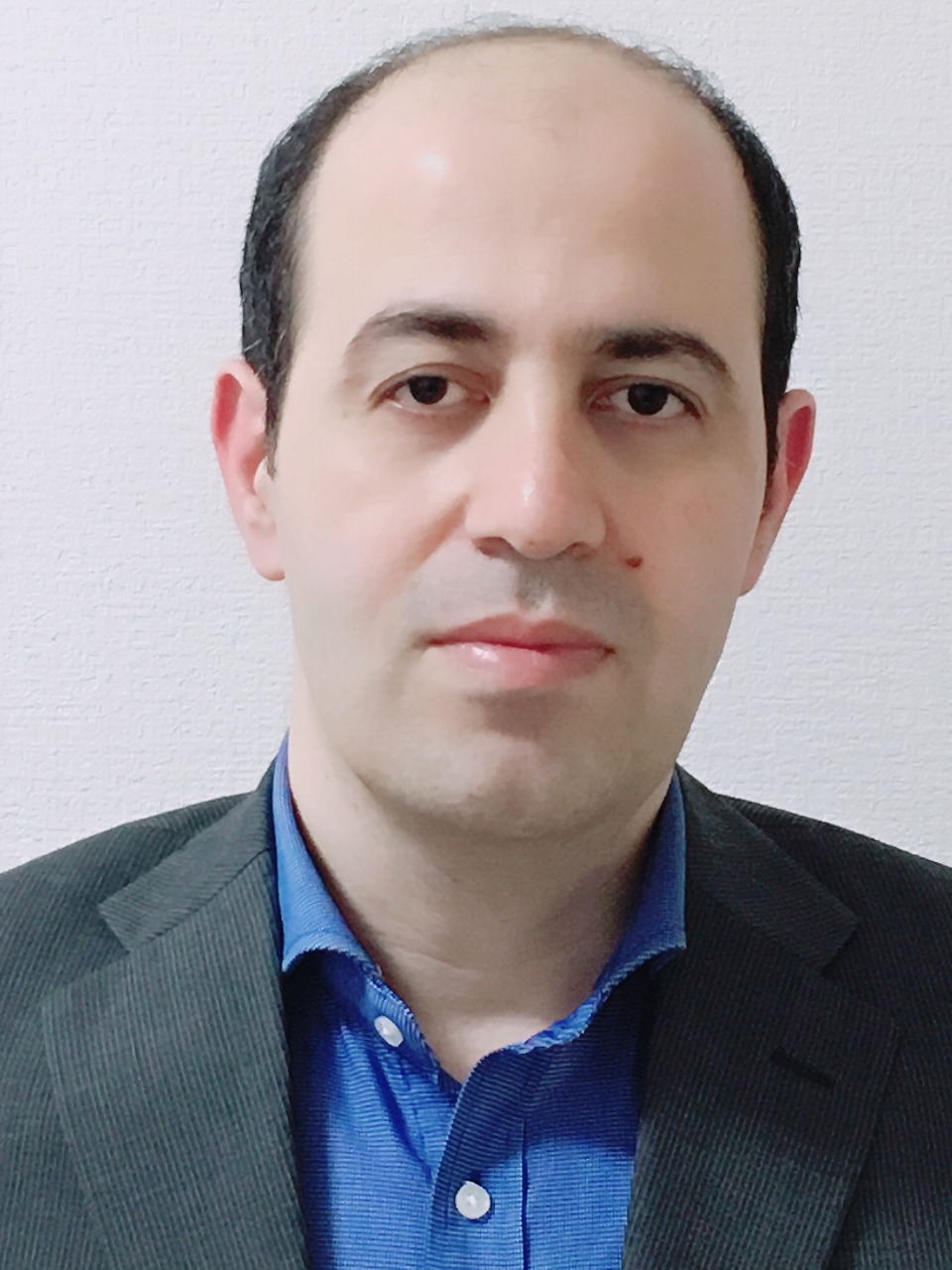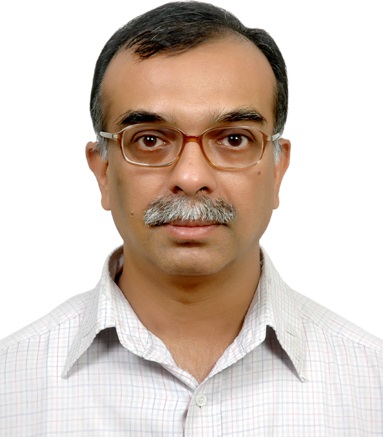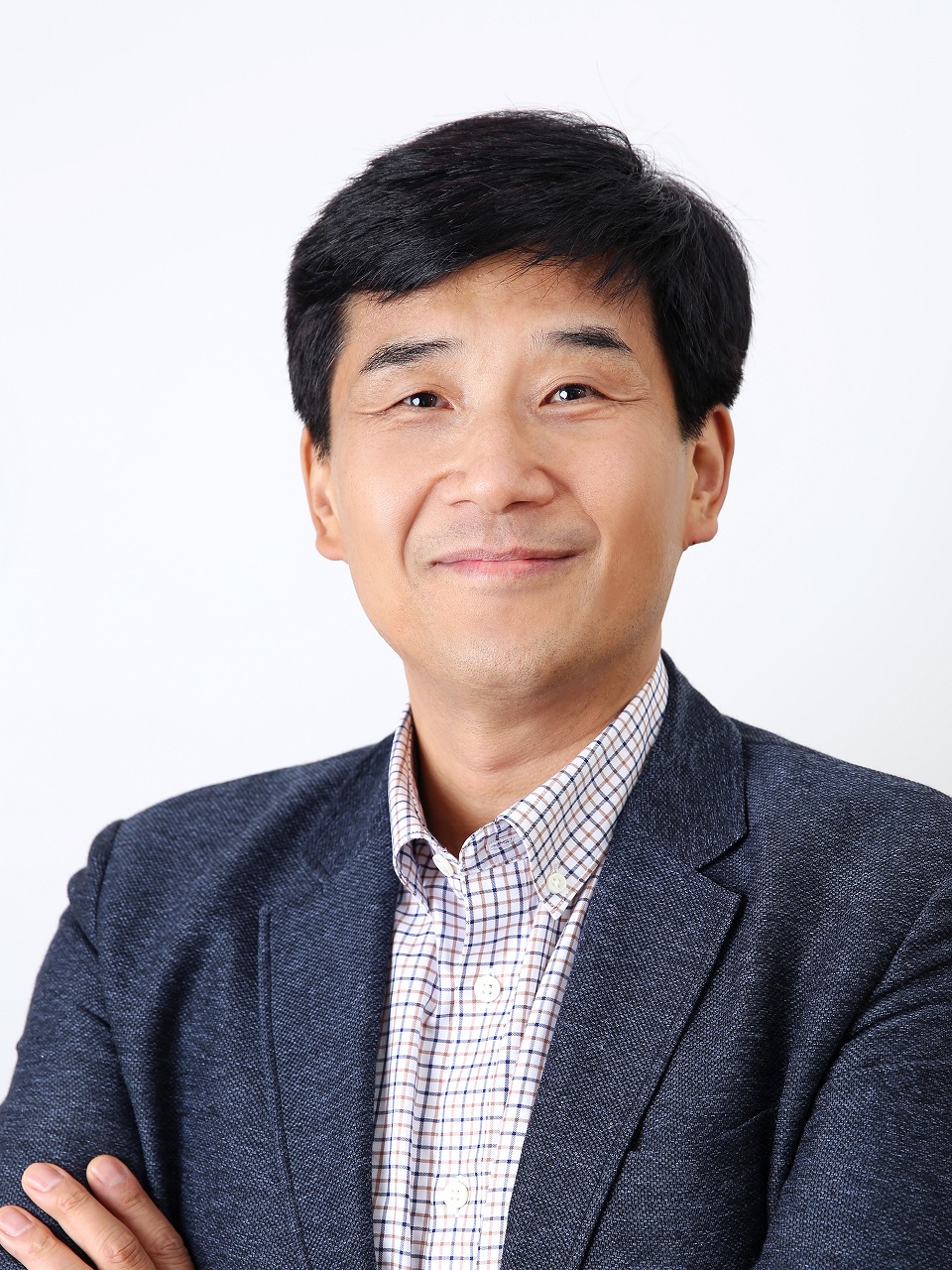List of Plenary and Keynote Speakers with Photos and Abstracts
Plenary Speaker: Professor Steven G. Louie, Distinguished Professor of the Graduate School at the University of California at Berkeley (UC Berkeley), Talk Title: "Novel States in 2D Materials and Moire Structures: Many-Electron Interactions and Topological Effects"
 Professor Steven G. Louie is a Distinguished Professor of the Graduate School at the University of California at Berkeley (UC Berkeley) and a retire-rehired Senior Faculty Scientist at the Lawrence Berkeley National Laboratory. He received his A.B. in physics and mathematics in 1972 and Ph.D. in physics in 1976, both from UC Berkeley. After having worked at the IBM Watson Research Center, Bell Labs (Murray Hill), and University of Pennsylvania, he joined the UC Berkeley physics faculty in 1980. He is an elected member of the National Academy of Sciences, the American Academy of Arts & Sciences, the Academia Sinica (Taiwan), and a foreign member of the Chinese Academy of Sciences, as well as a fellow of the American Physical Society (APS), the American Association for the Advancement of Science, and the Materials Research Society (MRS). He is a recipient of the APS Rahman Prize for Computational Physics, APS Davisson-Germer Prize in Surface Physics, MRS Materials Theory Award, Foresight Institute's Feynman Prize in Nanotechnology (Theory), and UC Berkeley's Berkeley Citation, among others. Louie's research is in theoretical condensed matter physics and nanoscience, with over 700 publications. He is known for his pioneering development of the ab initio GW method and for his studies of novel bulk and reduced-dimensional systems.
Professor Steven G. Louie is a Distinguished Professor of the Graduate School at the University of California at Berkeley (UC Berkeley) and a retire-rehired Senior Faculty Scientist at the Lawrence Berkeley National Laboratory. He received his A.B. in physics and mathematics in 1972 and Ph.D. in physics in 1976, both from UC Berkeley. After having worked at the IBM Watson Research Center, Bell Labs (Murray Hill), and University of Pennsylvania, he joined the UC Berkeley physics faculty in 1980. He is an elected member of the National Academy of Sciences, the American Academy of Arts & Sciences, the Academia Sinica (Taiwan), and a foreign member of the Chinese Academy of Sciences, as well as a fellow of the American Physical Society (APS), the American Association for the Advancement of Science, and the Materials Research Society (MRS). He is a recipient of the APS Rahman Prize for Computational Physics, APS Davisson-Germer Prize in Surface Physics, MRS Materials Theory Award, Foresight Institute's Feynman Prize in Nanotechnology (Theory), and UC Berkeley's Berkeley Citation, among others. Louie's research is in theoretical condensed matter physics and nanoscience, with over 700 publications. He is known for his pioneering development of the ab initio GW method and for his studies of novel bulk and reduced-dimensional systems.
Keynote Speakers
1. Dr. Mohammad Khazaei, Assistant professor in the Department of
Physics at the University of Tehran, Iran. Talk Title:
From MAX phases to MXenes: A First-Principles Exploration
 Dr. Mohammad Khazaei is an assistant professor in the Department of
Physics at the University of Tehran, Iran. His primary research interests
lie in computational materials science and condensed matter physics,
focusing on exploring physical and chemical phenomena in materials. His
research aims to advance the development of innovative materials for both
fundamental studies and practical applications in electronic and energy
devices by employing artificial intellience methodologies alongside
density functional theory. He obtained his Ph.D. from Tohoku University in
Japan in 2005. Subsequently, he held several positions, including a Japan
Society for the Promotion of Science (JSPS) fellowship at Tohoku University
and a postdoctoral fellowship within the Material Properties Theory Group
at the National Institute for Materials Science (NIMS) in Tsukuba, Japan.
>From 2016 to 2019, he worked as a research scientist at the RIKEN Center
for Computational Science. He then took on a role as a lecturer at Yokohama
National University, eventually becoming a specially appointed associate
professor at the Materials Research Center for Element Strategy at the
Tokyo Institute of Technology before returning to his home country in 2021.
He has authored over 60 research papers.
Dr. Mohammad Khazaei is an assistant professor in the Department of
Physics at the University of Tehran, Iran. His primary research interests
lie in computational materials science and condensed matter physics,
focusing on exploring physical and chemical phenomena in materials. His
research aims to advance the development of innovative materials for both
fundamental studies and practical applications in electronic and energy
devices by employing artificial intellience methodologies alongside
density functional theory. He obtained his Ph.D. from Tohoku University in
Japan in 2005. Subsequently, he held several positions, including a Japan
Society for the Promotion of Science (JSPS) fellowship at Tohoku University
and a postdoctoral fellowship within the Material Properties Theory Group
at the National Institute for Materials Science (NIMS) in Tsukuba, Japan.
>From 2016 to 2019, he worked as a research scientist at the RIKEN Center
for Computational Science. He then took on a role as a lecturer at Yokohama
National University, eventually becoming a specially appointed associate
professor at the Materials Research Center for Element Strategy at the
Tokyo Institute of Technology before returning to his home country in 2021.
He has authored over 60 research papers.
2. Prof. Umesh Waghmare, Professor, Jawaharlal Nehru Centre for Advanced Scientific Research, India, Talk Title: "Quantum Geometry of Electrons in 2D Materials: Proposals of GQuES Spectroscopies and Anomalous Hall Transistor"
 We will first present an introduction to quantum geometry of electrons in periodic structures in terms of Berry phases and curvature. We show that the coupling of dynamical excitations like phonons with electrons can have nontrivial consequences to quantum geometry of electronic structure, which manifest as oscillations in the Berry curvature dipole and hence have observable nonlinear Hall signatures. Using these, we introduce a vibrational spectroscopy[1] based on Geometry of Quantum Electronic Structure (GQuES) making specific predictions for the transport and radiative GQuES spectra of 2D materials. We demonstrate that a quantum material like graphene can be used as a substrate in GQuES spectroscopic analysis of other materials with trivial quantum geometry, significantly expanding the domain of applications of quantum materilas. Combining this with the idea of borken symmeties in 2D hetero-structures, we demonstrate emergence of nontrivial electric and Berry curvature dipoles in the heterostructure of graphene and monolayer of CrTe2, and propose an Anomalous Hall Transistor [2] enabling electrically and magnetically readable memory.
We will first present an introduction to quantum geometry of electrons in periodic structures in terms of Berry phases and curvature. We show that the coupling of dynamical excitations like phonons with electrons can have nontrivial consequences to quantum geometry of electronic structure, which manifest as oscillations in the Berry curvature dipole and hence have observable nonlinear Hall signatures. Using these, we introduce a vibrational spectroscopy[1] based on Geometry of Quantum Electronic Structure (GQuES) making specific predictions for the transport and radiative GQuES spectra of 2D materials. We demonstrate that a quantum material like graphene can be used as a substrate in GQuES spectroscopic analysis of other materials with trivial quantum geometry, significantly expanding the domain of applications of quantum materilas. Combining this with the idea of borken symmeties in 2D hetero-structures, we demonstrate emergence of nontrivial electric and Berry curvature dipoles in the heterostructure of graphene and monolayer of CrTe2, and propose an Anomalous Hall Transistor [2] enabling electrically and magnetically readable memory.
3. Dr. Kwang-Ryeol Lee, Tenured fellow and Principal Research Scientist, Computational Science Research Center, Korea Institute of Science and Technology (KIST), Korea, Talk Title: "Standardization of AI Ready Materials Research Data Schema and Vocabulary"
 Dr. Kwang-Ryeol Lee is a tenured fellow and principal research scientist at Computational Science Research Center, Korea Institute of Science and Technology (KIST). After receiving Ph.D in 1988 from Korea Advanced Institute of Science and Technology (KAIST), he was a postdoctoral research fellow in the Division of Applied Science at Harvard University to study the kinetics of the laser annealing of semiconductor surface. He joined KIST in 1991 and has been leading diamond-like carbon (DLC) research group. His research focused on both fundamental aspects and industrial application of the DLC coating technology. He succeeded in the technology transfer to industry of DLC coating technology to VCR head drum, IC forming and trimming die, dental and micro-drill, various sliding tools, and water-oil separation technology. From 2001, his research was extended to the computational nano-science to understand atomistic or sub-atomistic phenomena of materials, like interfacial intermixing during thin film growth or surface nanostructure evolution by ion bombardment. He served for many international conferences in both thin film technology and computational materials science, which include International Conference of Metallurgical Coating and Thin Films and Asian Consortium on Computational Materials Science. His research group developed the web-based computational research platform to design nano-materials and devices, resulting in spin-off company, Virtual Lab. Inc. in Korea. He also served at KIST as the director-general of the Institute of Multidiscipline Convergence of Matter during 2012-2014 and Technology Policy Research Institute during 2017-2019. As of May 2024, he published about 300 papers with more than 12,000 citations and H index of 57 (Google Scholar). He is holding more than 50 patents. He received 4 times the Best Research Award of KIST in 1995, 1998, 2005, 2007, the Commendation of the Prime Minister of Korea in 2006, Two times of NanoKorea Award for Innovative Research in 2011 and 2016. His effort for building Nano Materials Design Platform was recognized by "2018 Top 10 Nanotechnologies" award. He has served as a chair of committee for materials R&D data standard in Korea since 2021.
Dr. Kwang-Ryeol Lee is a tenured fellow and principal research scientist at Computational Science Research Center, Korea Institute of Science and Technology (KIST). After receiving Ph.D in 1988 from Korea Advanced Institute of Science and Technology (KAIST), he was a postdoctoral research fellow in the Division of Applied Science at Harvard University to study the kinetics of the laser annealing of semiconductor surface. He joined KIST in 1991 and has been leading diamond-like carbon (DLC) research group. His research focused on both fundamental aspects and industrial application of the DLC coating technology. He succeeded in the technology transfer to industry of DLC coating technology to VCR head drum, IC forming and trimming die, dental and micro-drill, various sliding tools, and water-oil separation technology. From 2001, his research was extended to the computational nano-science to understand atomistic or sub-atomistic phenomena of materials, like interfacial intermixing during thin film growth or surface nanostructure evolution by ion bombardment. He served for many international conferences in both thin film technology and computational materials science, which include International Conference of Metallurgical Coating and Thin Films and Asian Consortium on Computational Materials Science. His research group developed the web-based computational research platform to design nano-materials and devices, resulting in spin-off company, Virtual Lab. Inc. in Korea. He also served at KIST as the director-general of the Institute of Multidiscipline Convergence of Matter during 2012-2014 and Technology Policy Research Institute during 2017-2019. As of May 2024, he published about 300 papers with more than 12,000 citations and H index of 57 (Google Scholar). He is holding more than 50 patents. He received 4 times the Best Research Award of KIST in 1995, 1998, 2005, 2007, the Commendation of the Prime Minister of Korea in 2006, Two times of NanoKorea Award for Innovative Research in 2011 and 2016. His effort for building Nano Materials Design Platform was recognized by "2018 Top 10 Nanotechnologies" award. He has served as a chair of committee for materials R&D data standard in Korea since 2021.
-->
 Professor Steven G. Louie is a Distinguished Professor of the Graduate School at the University of California at Berkeley (UC Berkeley) and a retire-rehired Senior Faculty Scientist at the Lawrence Berkeley National Laboratory. He received his A.B. in physics and mathematics in 1972 and Ph.D. in physics in 1976, both from UC Berkeley. After having worked at the IBM Watson Research Center, Bell Labs (Murray Hill), and University of Pennsylvania, he joined the UC Berkeley physics faculty in 1980. He is an elected member of the National Academy of Sciences, the American Academy of Arts & Sciences, the Academia Sinica (Taiwan), and a foreign member of the Chinese Academy of Sciences, as well as a fellow of the American Physical Society (APS), the American Association for the Advancement of Science, and the Materials Research Society (MRS). He is a recipient of the APS Rahman Prize for Computational Physics, APS Davisson-Germer Prize in Surface Physics, MRS Materials Theory Award, Foresight Institute's Feynman Prize in Nanotechnology (Theory), and UC Berkeley's Berkeley Citation, among others. Louie's research is in theoretical condensed matter physics and nanoscience, with over 700 publications. He is known for his pioneering development of the ab initio GW method and for his studies of novel bulk and reduced-dimensional systems.
Professor Steven G. Louie is a Distinguished Professor of the Graduate School at the University of California at Berkeley (UC Berkeley) and a retire-rehired Senior Faculty Scientist at the Lawrence Berkeley National Laboratory. He received his A.B. in physics and mathematics in 1972 and Ph.D. in physics in 1976, both from UC Berkeley. After having worked at the IBM Watson Research Center, Bell Labs (Murray Hill), and University of Pennsylvania, he joined the UC Berkeley physics faculty in 1980. He is an elected member of the National Academy of Sciences, the American Academy of Arts & Sciences, the Academia Sinica (Taiwan), and a foreign member of the Chinese Academy of Sciences, as well as a fellow of the American Physical Society (APS), the American Association for the Advancement of Science, and the Materials Research Society (MRS). He is a recipient of the APS Rahman Prize for Computational Physics, APS Davisson-Germer Prize in Surface Physics, MRS Materials Theory Award, Foresight Institute's Feynman Prize in Nanotechnology (Theory), and UC Berkeley's Berkeley Citation, among others. Louie's research is in theoretical condensed matter physics and nanoscience, with over 700 publications. He is known for his pioneering development of the ab initio GW method and for his studies of novel bulk and reduced-dimensional systems.
 Dr. Mohammad Khazaei is an assistant professor in the Department of
Physics at the University of Tehran, Iran. His primary research interests
lie in computational materials science and condensed matter physics,
focusing on exploring physical and chemical phenomena in materials. His
research aims to advance the development of innovative materials for both
fundamental studies and practical applications in electronic and energy
devices by employing artificial intellience methodologies alongside
density functional theory. He obtained his Ph.D. from Tohoku University in
Japan in 2005. Subsequently, he held several positions, including a Japan
Society for the Promotion of Science (JSPS) fellowship at Tohoku University
and a postdoctoral fellowship within the Material Properties Theory Group
at the National Institute for Materials Science (NIMS) in Tsukuba, Japan.
>From 2016 to 2019, he worked as a research scientist at the RIKEN Center
for Computational Science. He then took on a role as a lecturer at Yokohama
National University, eventually becoming a specially appointed associate
professor at the Materials Research Center for Element Strategy at the
Tokyo Institute of Technology before returning to his home country in 2021.
He has authored over 60 research papers.
Dr. Mohammad Khazaei is an assistant professor in the Department of
Physics at the University of Tehran, Iran. His primary research interests
lie in computational materials science and condensed matter physics,
focusing on exploring physical and chemical phenomena in materials. His
research aims to advance the development of innovative materials for both
fundamental studies and practical applications in electronic and energy
devices by employing artificial intellience methodologies alongside
density functional theory. He obtained his Ph.D. from Tohoku University in
Japan in 2005. Subsequently, he held several positions, including a Japan
Society for the Promotion of Science (JSPS) fellowship at Tohoku University
and a postdoctoral fellowship within the Material Properties Theory Group
at the National Institute for Materials Science (NIMS) in Tsukuba, Japan.
>From 2016 to 2019, he worked as a research scientist at the RIKEN Center
for Computational Science. He then took on a role as a lecturer at Yokohama
National University, eventually becoming a specially appointed associate
professor at the Materials Research Center for Element Strategy at the
Tokyo Institute of Technology before returning to his home country in 2021.
He has authored over 60 research papers.
 We will first present an introduction to quantum geometry of electrons in periodic structures in terms of Berry phases and curvature. We show that the coupling of dynamical excitations like phonons with electrons can have nontrivial consequences to quantum geometry of electronic structure, which manifest as oscillations in the Berry curvature dipole and hence have observable nonlinear Hall signatures. Using these, we introduce a vibrational spectroscopy[1] based on Geometry of Quantum Electronic Structure (GQuES) making specific predictions for the transport and radiative GQuES spectra of 2D materials. We demonstrate that a quantum material like graphene can be used as a substrate in GQuES spectroscopic analysis of other materials with trivial quantum geometry, significantly expanding the domain of applications of quantum materilas. Combining this with the idea of borken symmeties in 2D hetero-structures, we demonstrate emergence of nontrivial electric and Berry curvature dipoles in the heterostructure of graphene and monolayer of CrTe2, and propose an Anomalous Hall Transistor [2] enabling electrically and magnetically readable memory.
We will first present an introduction to quantum geometry of electrons in periodic structures in terms of Berry phases and curvature. We show that the coupling of dynamical excitations like phonons with electrons can have nontrivial consequences to quantum geometry of electronic structure, which manifest as oscillations in the Berry curvature dipole and hence have observable nonlinear Hall signatures. Using these, we introduce a vibrational spectroscopy[1] based on Geometry of Quantum Electronic Structure (GQuES) making specific predictions for the transport and radiative GQuES spectra of 2D materials. We demonstrate that a quantum material like graphene can be used as a substrate in GQuES spectroscopic analysis of other materials with trivial quantum geometry, significantly expanding the domain of applications of quantum materilas. Combining this with the idea of borken symmeties in 2D hetero-structures, we demonstrate emergence of nontrivial electric and Berry curvature dipoles in the heterostructure of graphene and monolayer of CrTe2, and propose an Anomalous Hall Transistor [2] enabling electrically and magnetically readable memory.
 Dr. Kwang-Ryeol Lee is a tenured fellow and principal research scientist at Computational Science Research Center, Korea Institute of Science and Technology (KIST). After receiving Ph.D in 1988 from Korea Advanced Institute of Science and Technology (KAIST), he was a postdoctoral research fellow in the Division of Applied Science at Harvard University to study the kinetics of the laser annealing of semiconductor surface. He joined KIST in 1991 and has been leading diamond-like carbon (DLC) research group. His research focused on both fundamental aspects and industrial application of the DLC coating technology. He succeeded in the technology transfer to industry of DLC coating technology to VCR head drum, IC forming and trimming die, dental and micro-drill, various sliding tools, and water-oil separation technology. From 2001, his research was extended to the computational nano-science to understand atomistic or sub-atomistic phenomena of materials, like interfacial intermixing during thin film growth or surface nanostructure evolution by ion bombardment. He served for many international conferences in both thin film technology and computational materials science, which include International Conference of Metallurgical Coating and Thin Films and Asian Consortium on Computational Materials Science. His research group developed the web-based computational research platform to design nano-materials and devices, resulting in spin-off company, Virtual Lab. Inc. in Korea. He also served at KIST as the director-general of the Institute of Multidiscipline Convergence of Matter during 2012-2014 and Technology Policy Research Institute during 2017-2019. As of May 2024, he published about 300 papers with more than 12,000 citations and H index of 57 (Google Scholar). He is holding more than 50 patents. He received 4 times the Best Research Award of KIST in 1995, 1998, 2005, 2007, the Commendation of the Prime Minister of Korea in 2006, Two times of NanoKorea Award for Innovative Research in 2011 and 2016. His effort for building Nano Materials Design Platform was recognized by "2018 Top 10 Nanotechnologies" award. He has served as a chair of committee for materials R&D data standard in Korea since 2021.
Dr. Kwang-Ryeol Lee is a tenured fellow and principal research scientist at Computational Science Research Center, Korea Institute of Science and Technology (KIST). After receiving Ph.D in 1988 from Korea Advanced Institute of Science and Technology (KAIST), he was a postdoctoral research fellow in the Division of Applied Science at Harvard University to study the kinetics of the laser annealing of semiconductor surface. He joined KIST in 1991 and has been leading diamond-like carbon (DLC) research group. His research focused on both fundamental aspects and industrial application of the DLC coating technology. He succeeded in the technology transfer to industry of DLC coating technology to VCR head drum, IC forming and trimming die, dental and micro-drill, various sliding tools, and water-oil separation technology. From 2001, his research was extended to the computational nano-science to understand atomistic or sub-atomistic phenomena of materials, like interfacial intermixing during thin film growth or surface nanostructure evolution by ion bombardment. He served for many international conferences in both thin film technology and computational materials science, which include International Conference of Metallurgical Coating and Thin Films and Asian Consortium on Computational Materials Science. His research group developed the web-based computational research platform to design nano-materials and devices, resulting in spin-off company, Virtual Lab. Inc. in Korea. He also served at KIST as the director-general of the Institute of Multidiscipline Convergence of Matter during 2012-2014 and Technology Policy Research Institute during 2017-2019. As of May 2024, he published about 300 papers with more than 12,000 citations and H index of 57 (Google Scholar). He is holding more than 50 patents. He received 4 times the Best Research Award of KIST in 1995, 1998, 2005, 2007, the Commendation of the Prime Minister of Korea in 2006, Two times of NanoKorea Award for Innovative Research in 2011 and 2016. His effort for building Nano Materials Design Platform was recognized by "2018 Top 10 Nanotechnologies" award. He has served as a chair of committee for materials R&D data standard in Korea since 2021.